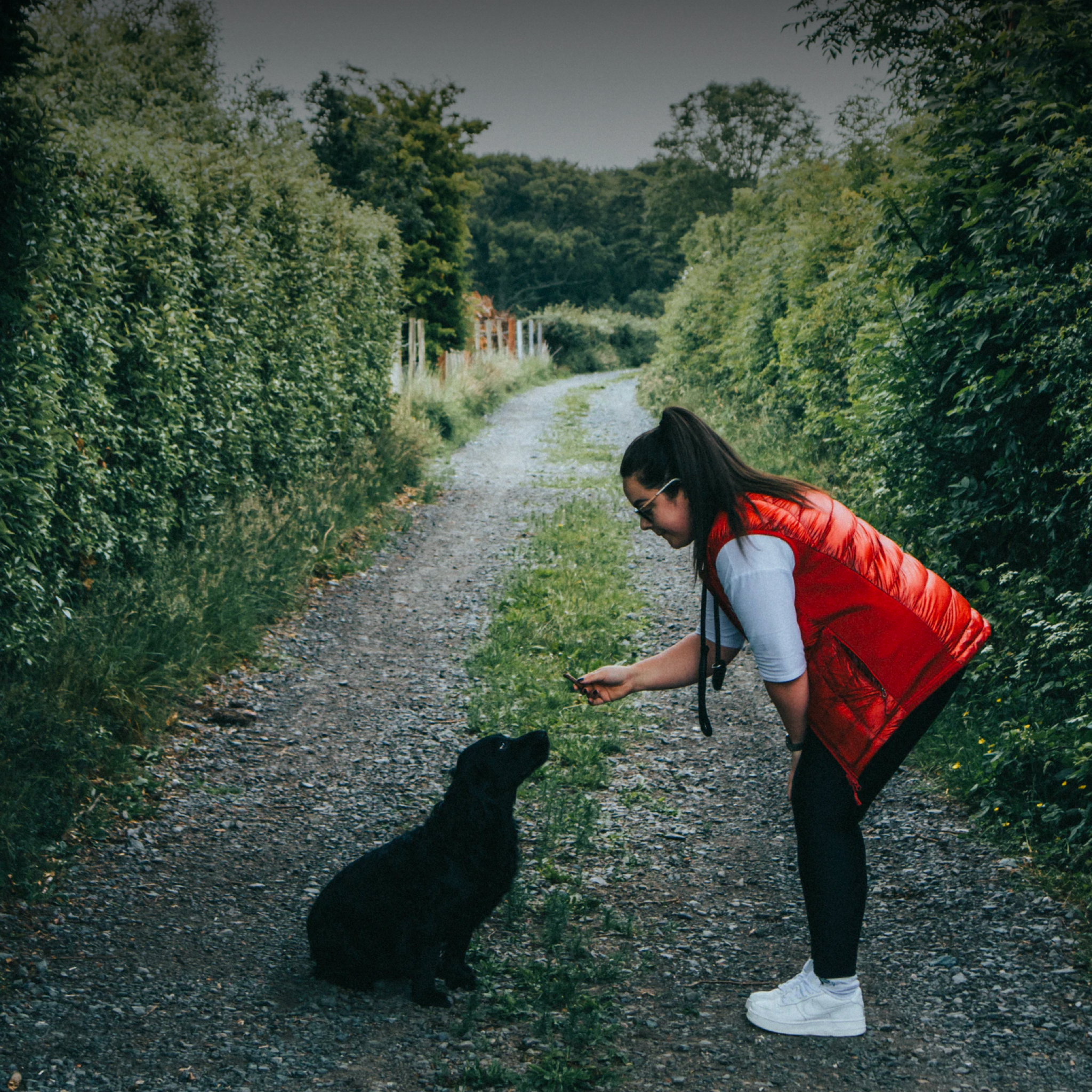I am a professional dog trainer, and I know better than anyone else that hiring a dog trainer for one-on-one coaching lessons can be a big commitment, both in terms of time and money!
While all dogs need training, there is a lot you can do by yourself with the right approach and some little tricks and tips.
Not every dog requires private training lessons. Today I want to share with you how you can jump-start your training at home - and possibly teach your dog everything he needs to know, without ever seeing a trainer!
1. We already know why you are calling us
Every owner thinks that their dog is unique and special. While this is true - every dog is the best dog to his person - there are very clear patterns in the types of issues certain dogs have. Herding dogs such as Australian Shepherds or German Shepherds? If you reach out to me as an owner of those breeds, you are probably struggling with reactivity. Doodle mixes such as Goldendoodles or Labradoodles? They likely are mouthy, rambunctious, and pull on the leash. Heelers? I guess they are nipping at people’s ankles. A Husky? Probably does not listen and runs away a lot.
Genetics are strong and will produce certain predictable behavioral issues. By informing yourself about your dog’s tendencies you can already avoid a lot of future problems. A herding breed will need a lot of positive exposure and socialization to not become reactive. Any Poodle mix should work on patience, impulse control and leash manners and Huskies should have a lot of recall practice!
2. Good Behavior Starts with Good Management
No dog trainer has a magic wand to turn your dog’s behavior around instantly. A lot of our work actually is to recommend suitable management and setups for misbehaving dogs.

A dog that shows poor manners and unwanted behavior needs to first and foremost be kept from rehearsing this behavior over and over - because it will only become more ingrained and problematic.
Whenever I see a dog that has behavioral problems, I first discuss management ideas with the owners. A dog that’s jumping up at visitors? We will install a baby gate to stop the behavior from becoming even worse right away. Then, once we have put this in place, we can focus extensively on actually training the dog to not jump.
A dog that is running away? We will keep him on a leash or long line while we retrain his recall. Training and management always go hand in hand: Keep the dog from rehearsing the bad, then teach him the wanted behavior!
3. You cannot be stingy
Nearly all dog owners are too stingy with their treats and rewards. They do not want to “bribe” the dog or let him become dependent on reinforcement. This is addressing the issue from the wrong angle. We first have to change the dog’s behavior and then we can think about fading the rewards. You really do not have to worry about using too many rewards if your dog cannot yet do the wanted behavior in the first place.
My clients are always impressed at how quickly their dog learns in our lessons. It is because I make the wanted behaviors incredibly rewarding for the dog, with very high-value treats. Only once the dog knows what it is we want him to do we reduce the frequency of treats.
4. Dogs love to chase
You think you already know this one - but are you using it to your advantage in training? Dogs will enjoy

working with you a lot more if you can incorporate an element of hunting.
Instead of calling your dog to you as you stand still - turn around and race away from your dog! He will run faster to catch up and it will strengthen his recall.
Instead of handing your dog a treat calmly - make him catch you with the treat, or toss the treat across the floor for your dog to chase. It will make your training more dynamic and more effective!
5. Free training information is everywhere
You can access so much free training information on the internet these days. There are blogs, Facebook groups, YouTube channels, podcasts … it might take a bit of digging, but you will probably be able to find a solution to your dog’s problems for free somewhere.
Look for positive and reward-based training methods. Many dog trainers have blogs and websites where they freely share a lot of advice that might just solve your dog’s exact problem!
Forums and discussion platforms such as Reddit offer another option to seek help: You can post your current training struggle there and others that have similar issues can respond or point you in the right direction for free help online.
6. Not everything will be 100% fixed
Very few ethical dog trainers give guarantees for the outcome of their training. This is not because we don’t know what they are doing - it is because we are working with living beings who will be - to some extent - unpredictable!
Just like a doctor cannot promise or foresee if your broken arm will heal perfectly without surgery or if cancer will return, we cannot predict how long it will take to train your dog or if he will be 100% perfect.
Some issues will need management for the rest of your dog’s life. If your dog has ever bitten someone, he will need to be contained around people. If your dog was a stray before you adopted him and has a long history of running away and scavenging food, it might be that you can never let him off-leash.
It is important to be realistic about the difference between improving behavior and perfecting a behavior. We can always improve it - but sometimes we cannot provide you with a guaranteed fix. This is where the owner will need to be mindful and considerate and take precautions to keep their dog and everyone else safe.
The bottom line
With the vast amount of information available on the internet today you can get a head-start on training for free. Consider your dog’s breed-specific tendencies and make sure to address them in your training plan. Utilize both management (keeping the dog from making bad choices) and training (actually changing the dog’s behavior) for optimal results, and don’t be stingy with your treats!
Don’t think that a dog trainer will be able to fix your dog’s issue right away - sometimes we cannot even completely “cure” dogs in the long run. Continually striving for small improvements is the key to success.




Share:
How K9 Sport Sack Can Help You Adventure With Your Dog All Summer Long
10 Indicators of Your Dog's Declining Health